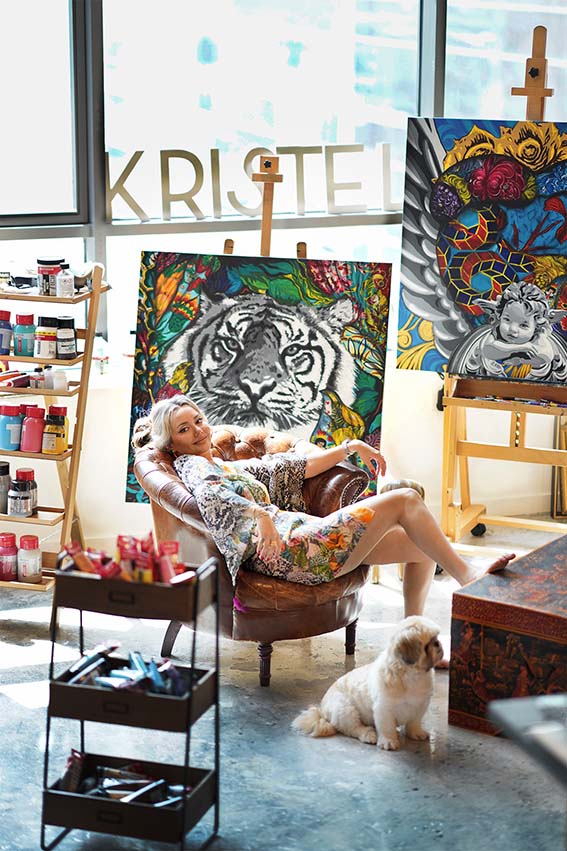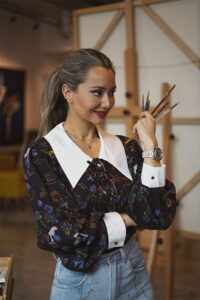Art has an incredible ability to evoke a multitude of emotions and interpretations. As we delve into the fascinating realm of “Understanding Different Perspectives on Artwork,” we unravel the intricate layers of art interpretation, perception, and appreciation. In this exploration, we’ll examine the various aspects that influence how we perceive and derive meaning from art, ultimately shaping our artistic perspective.
A Multifaceted Journey
Art interpretation is a deeply personal and subjective process. When we stand before a piece of artwork, we bring our own unique perspectives, experiences, and cultural backgrounds into play. This rich tapestry of individuality molds our understanding of the artistic meaning embedded within the work.
Art appreciation is not confined to the artist’s intention alone; it extends to the viewer’s capacity to connect with the artwork on a visceral level. The beauty of art lies in its ability to transcend boundaries, inviting us to explore different creative perspectives and engage in a meaningful dialogue with the artwork.
Art perception is the lens through which we view and interpret art. It encompasses our emotional response, intellectual engagement, and the context in which we encounter the artwork. The same piece of art can evoke entirely different emotions and meanings for different individuals, showcasing the diversity of artistic perception.
Understanding the intricacies of art context is pivotal in art perception. The historical, cultural, and social backdrop against which a piece of art was created adds layers of meaning and significance. Artistic perception is profoundly influenced by our awareness of these contextual elements, allowing us to delve deeper into the artist’s message and intentions.
Shaping the Narrative
Artistic perception is a dynamic force that shapes the narrative of a piece of artwork. It can manifest through various artistic techniques, such as composition, color, and symbolism. The deliberate choices made by the artist influence how we perceive and connect with the work.
Moreover, artistic perception extends to the artist’s own viewpoint and intentions. The artist’s unique perspective is a driving force behind the creation of art. It is through their creative choices and the way they express their artistic connotation that we, as viewers, are invited to explore different dimensions of the artwork.
A Tapestry of Interpretations
Artistic meaning is not fixed; it is a tapestry of interpretations woven by the artist’s vision and the viewer’s perspective. When we engage with art, we embark on a journey of discovery, seeking to unravel the layers of meaning hidden within the strokes of a brush or the contours of a sculpture.
Artistic sense can be overt, where the artist’s message is clear and direct. However, it can also be enigmatic, leaving room for interpretation and personal reflection. It is this ambiguity that allows art to be a mirror reflecting our own thoughts, emotions, and experiences.
Art context plays a pivotal role in shaping our creative perspective. It encompasses the historical, cultural, and social milieu in which a piece of art was created. Understanding this context provides valuable insights into the artist’s motivations and intentions.
For example, a painting from the Renaissance era, such as Leonardo da Vinci’s “Mona Lisa,” holds different significance when viewed within its historical context. It becomes a window into the art and culture of that period, offering clues about societal norms, values, and aesthetics.
Cultural diversity greatly influences how we interpret and appreciate art. Art serves as a universal language, transcending linguistic and geographical boundaries. When we view art from different cultures, we gain new perspectives and insights into the richness of human creativity.
For instance, traditional Chinese brush paintings, with their emphasis on harmony, balance, and fluidity, offer a contrasting perspective to the vibrant and dynamic styles of Western art. Exploring these cultural differences enriches our creative perspective and broadens our understanding of the world.
Emotional and Intellectual Engagement
Artistic perception is not solely a cerebral exercise; it involves both emotional and intellectual engagement. When we encounter a powerful piece of art, it has the capacity to stir our emotions, provoke deep thought, and ignite our imagination.
For example, Edvard Munch’s iconic painting “The Scream” elicits a visceral emotional response in viewers. Its vivid colors and distorted figures convey a sense of anguish and existential turmoil. While its intellectual interpretation may vary, the emotional impact is palpable and universal.
Artistic perception is not static; it evolves with time and societal changes. As art movements and styles shift, so do our modes of interpretation. Modern and contemporary art, with their emphasis on abstraction, conceptualism, and unconventional materials, challenge traditional modes of artistic perception.
Consider the works of artists like Jackson Pollock or Yayoi Kusama, whose art invites viewers to engage with it on multiple levels. Their unconventional approaches disrupt conventional artistic perception, encouraging us to explore new ways of interpreting and appreciating art.
Embracing Diversity in Art Interpretation
In conclusion, “Understanding Different Perspectives on Artwork” celebrates the diversity and richness of reading art, perception, and appreciation. It highlights the profound impact of individuality, cultural context, and artistic perception in shaping how we connect with art.
Art invites us to explore the myriad ways in which we perceive the world and express our innermost thoughts and emotions. It is a reflection of the human experience, a canvas upon which our unique perspectives are woven into the fabric of artistic sense.
As we navigate the multifaceted world of art, let us embrace the beauty of diversity in art understanding and appreciate the ever-evolving nature of artistic perspective. It is through this richness of perspectives that art continues to inspire, challenge, and unite us in a shared celebration of creativity and expression.
Shop my artwork collection.
Check my digital artwork collection.


